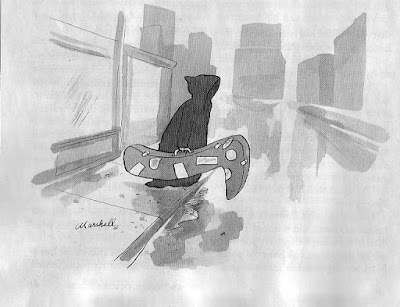This is a repository for material dealing with the experiences of dying people, grieving relatives and the care givers that attend them. It is a supplement to a Williams College course on Death and Dying that was held during January 2015.
Wednesday, September 30, 2015
Saturday, September 26, 2015
When it comes to end-of-life care, perhaps we do need a bigger hammer
by Richard Sontheimer.
While sitting one
evening with my terminally ill elderly mother, she again asked me to help her
end her suffering. This time it was,
“Could you just go get the hammer and hit me in the head?” Her previous
requests had included “Son, you are a doctor, can’t you do something to help me
with this?” And then, “They treat
animals better than this.”
On previous occasions,
I had to remind my mom that we lived in one of the 48 states in the USA that
does not have a death-with-dignity euthanasia law. Her response was, “Then can you move me to
Oregon or Washington?”
Rick Sontheimer is an old friend of mine. His article is well-written, deep and important. You can access it at Kevinmd.com.
Thursday, September 24, 2015
Escape From the Land of the Pink Bibs
This is the story of Narcy Houle’s father, a highly respected orthopedic
surgeon, developed Alzheimer’s. During
the course of the disease, he broke his hip. One day when we visited him at the
nursing center, about six months after his accident, we found him sitting in a
row of patients all wearing pink bibs, left on after they had finished eating.
Like the others, his head was bent toward his lap; though his eyes were open, they
were not focused on anything. His shoulders slouched, like a rag doll’s, and his
mouth hung slightly ajar.
What he needed was a geriatrician.
Most health care professionals have had little to no training in the care
of older adults. Currently, 97 percent of all medical students in the United
States do not take a single course in geriatrics.
Recent studies show that good geriatric care can make an enormous
difference. Older adults whose health is monitored by a geriatrician enjoy more years
of independent living, greater social and physical functioning and lower
presence of disease. In addition, these patients show increased satisfaction, spend
less time in the hospital, exhibit markedly decreased rates of depression and spend less
time in nursing homes.
See:
An Aging Population, Without the Doctors to Match by Marcy Cottrell Houle (NY Times, September 23, 2015)
Subscribe to:
Posts (Atom)


